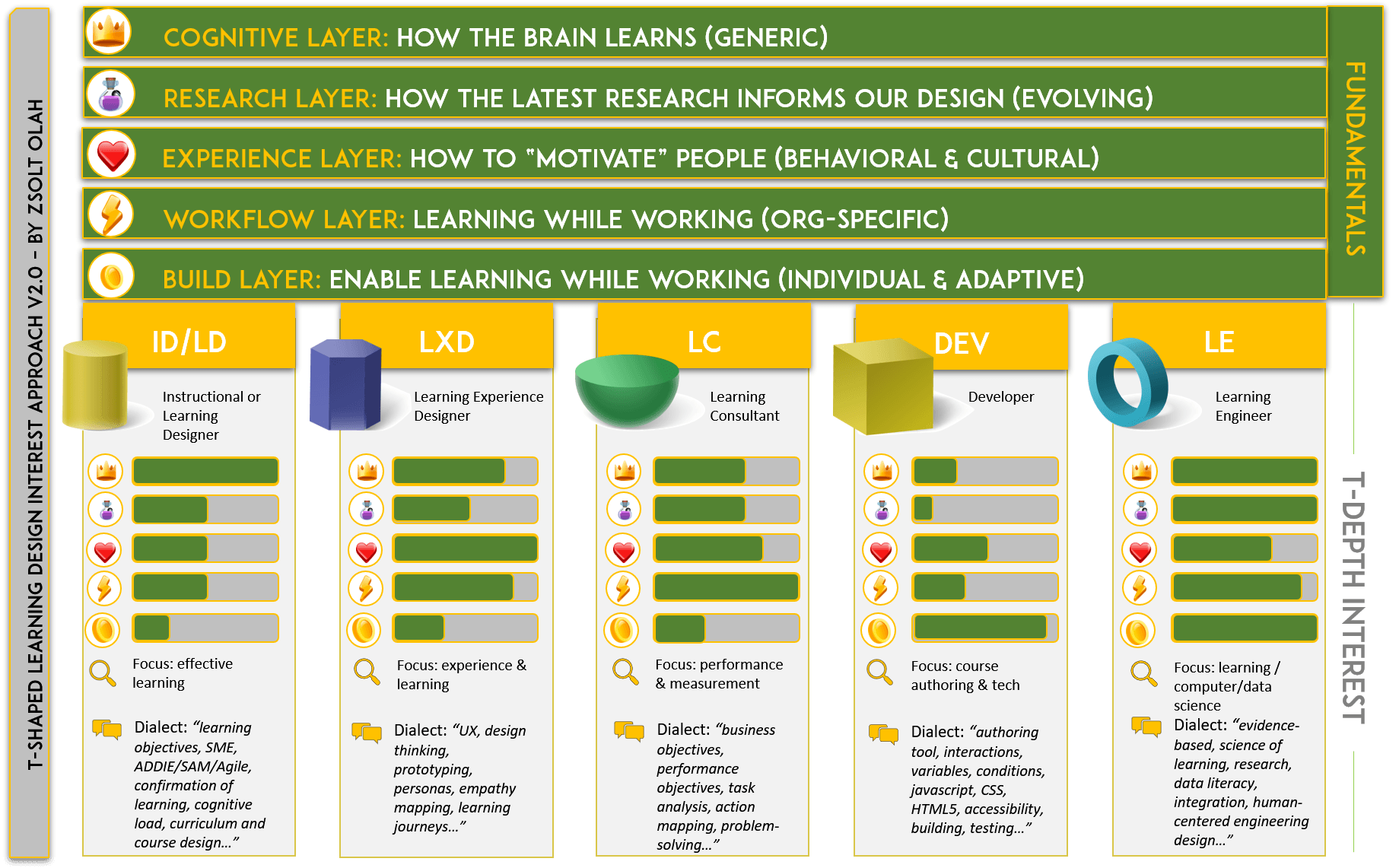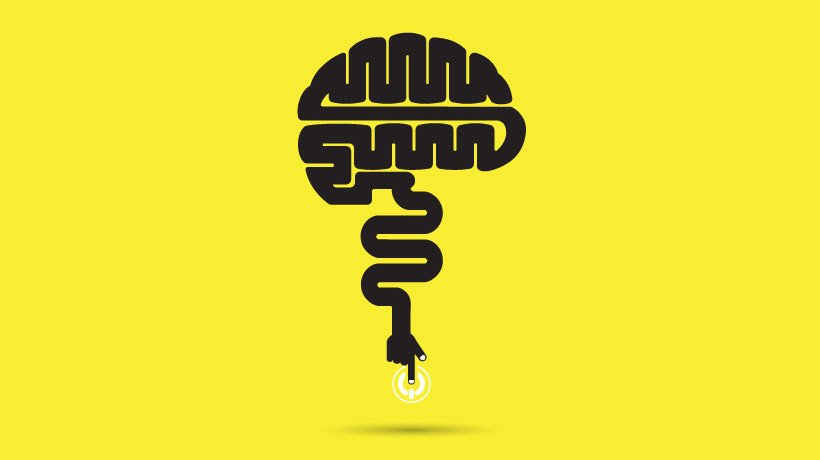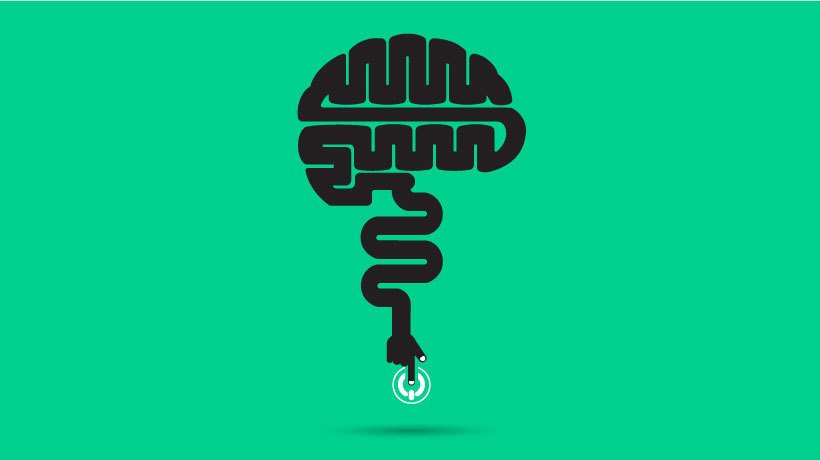Are You Interested In Becoming A Learning Designer?
I’ll share best practices both for those who are looking to find a full-time position and those who want to be independent freelancers in workplace learning. If you’re targeting K-12 and higher-ed positions, some of these thoughts may not apply. My 20+ years of experience are most relevant to the messy, real-world workplace learning. This is article one in a two-part series.
The Challenge: Are You The Rockstar Learning Designer We’re Looking For?
This entry-level position requires 2 years of experience. You are the perfect combination of a learning science ninja, a project management czar, a Picasso graphic artist, an uber stack developer, inventor of the Rubik’s cube, gamification connoisseur, a personal knowledge management hero, an SME whisperer, a technology ecosystem wizard, a drunk history data storyteller, a rockstar collaborator with a pinch of stand-up comedy wit powered by spiced-up marketing campaign design. Any previous UX experience immersed in AR/VR is a big plus. Proven capability of doing more with less when walking on water would be ideal.
Yes, it’s sarcasm. But doesn’t it feel like this sometimes when reading those job descriptions? How do you get years of experience without a job in the field? Don’t get discouraged. This series of two articles will guide you through some of these hurdles and answer many questions.
Part 1 answers the following questions:
- What types of positions and roles are out there?
- What titles should I be looking at: ID, ISD, LD, LXD, LC, Dev, LE?
- What is a T-shaped design approach? How will it help me understand the world of workplace learning?
Part 2 covers the following:
- How to address the multi-year experience requirement.
- What if they want me to design and build something on the spot?
- Why starting out with content may lead to ineffective learning—Where should I start instead?
- Where to find vetted resources so I can sound articulate about topics related to workplace learning—What myths should I be aware of?
Finding Your Vision: Your Dream Job
Always begin with the end in mind: your dream job. Before you hit the search engines to look for jobs, think about what type of job you’re looking for in the field of “learning design.”
What Is Learning Design Exactly?
“We can’t design learning. Learning is an internal process of the brain. What we can design is the most effective conditions for learning in a given context.” – Anonymous Designer
The workplace is a messy, complex world where performance and results are often more important than the process of formal learning. It is important to understand that when you read CEOs and business leaders talking about the importance of learning, they don’t mean courses and curriculums (only). They mean the capability of acquiring new knowledge and skills, and the ability to apply those in today’s fast-paced work. Learning happens every single day and everywhere.
What’s Your Vision Of Learning?
As an aspiring learning designer, your first task is to decide whether you want to solve problems (where part of the solution might be learning or training) or you just want to design/develop courses. If the latter, this article will be still useful but keep in mind that its focus is on problem-solving.
What Positions Should I Be Looking At?
To simplify, there are 3 types of learning design positions out there:
- Full-time learning professional within a workplace Learning and Development (L&D) group (in-house)
- Full-time learning professional as a contracted solution provider (vendor)
- Freelance learning professional, owning your own business (self-employed)
In the US, you may hear the phrases W2 and 1099. These are tax forms based on whether you’re a full-time employee (#1 and #2) or a contractor (#3). I’ve done all three to some extent, and I also have experience working with and hiring contractors. Each of these positions has pros and cons, depending on how comfortable you are working with external clients or running your own business. If you’re just starting out, your best bet is probably #1 or #2. If you're thinking of doing freelance work, you'll find additional resources here in this Flipboard magazine I put together [1].
What Roles Should I Be Looking At?
In terms of roles, again with the simplification of the complex reality, there are 3 types of learning design jobs:
- Working within a team (along with graphics designers, developers, project managers, etc.)
You own your part of the design. The rest of your job is to communicate well with the team. The good thing about being in a team is that you can focus on learning. You won’t need to use Photoshop or learn how to animate characters on the fly. - Working alone (multi-hats)
Your role here changes based on day-to-day work and phase of the project. You’re in control of change and progress but you are also the bottleneck in graphics, development, and production. You may work with other learning designers in a group with limited collaboration. A special version of this type of role is the “department of one.” Well, it says it all. You do everything from analysis to design and development. - Project/Program manager (working with outside vendors)
In this type of role, you’re not a hands-down learning designer anymore, rather a manager overseeing the project done by an external vendor. This job is in between a learning designer and project manager. You must have an interest in both to be successful.
Once you have an idea of what type of position and role you’re interested in, the next step is finding out what employers are after in their job descriptions. It’s time to search for your dream job.
Searching For Jobs: Confusing Job Titles
Every journey needs a destination. Without knowing where you’re going, you’re already lost. One practical way of finding out what knowledge, skills, tools, and abilities you need is looking at job postings. And that’s where you’ll run into another challenge: Job titles.
Are you interested in becoming an Instructional Designer, instructional systems designer, learning designer, Learning Experience Designer, learning consultant, eLearning developer, learning engineer, or a jack-of-all-learning-trades?
ATD in their research concludes that the role of an Instructional Designer is constantly changing:
The role of an Instructional Designer is continuously evolving to meet industry demands, and may vary further from organization to organization or by geographic location. The role of an Instructional Designer may include designer, facilitator, trainer, writer, innovator, evaluator, multimedia developer, editor, and most often, project manager. As a result of these varying duties, Instructional Designers’ titles may be different and therefore often not understood or recognized by those individuals outside the field [2].
- A 2016 job description analysis has more sector-specific findings of Instructional Design.
- The article, "The Identity Crisis of L&D," written by Ceren Korkmaz, digs deeper into the differences between Instructional Designers, Learning Experience Designers, learning architects, and learning engineers.
- Cara North also provides more insights with examples of how inconsistent we are in the industry about titles and responsibilities.
Research Summary
After all the research and countless conversations on social media, we can probably agree on 2 things:
- Titles won’t make you who you are or how good you are at your job. However, titles on your resume do matter for your career.
- L&D titles are determined less by what responsibilities people have or what they do and more by HR/L&D policies or a hiring manager’s preferences.
In an attempt to explain some of the differences, I’ve created the following infographic, titled "T-Shaped Learning Design Interest Approach."

How To Read This Infographic
As with every infographic, it is a simplified version of reality (or even just perception of reality). The goal is for you to have a mental model about what exists out there in the world of learning. It is not a definition of roles or a taxonomy in any way; it is a simple guide for you to find where your interest is within the field of workplace learning.
What’s A T-shaped model?
“The vertical bar on the letter T represents the depth of related skills and expertise in a single field, whereas the horizontal bar is the ability to collaborate across disciplines with experts in other areas and to apply knowledge in areas of expertise other than one's own.”– Wikipedia
It takes time, talent, and a lot of experience to be good at everything in the field of workplace learning. (One can argue that with the pace of change happening in today’s world, it is not even realistic.) Therefore, you should have the fundamentals in place (horizontal bar), and then dig deeper into one specific area (vertical bar). At the same time, with deliberate practice (and some luck), you can, of course, have multi-depths if that is your interest.
For example, some people do both design and development, while others only focus on one of them. Be very clear in your resume and application of what your interests are!
The Fundamentals
The five horizontal layers represent the fundamentals that you should have as a baseline. The goal is efficacy, not efficiency at these levels. You should be able to speak the language, ask the right questions, and apply the basics in each layer. It is like learning a new language: you don’t want to be fooled, and you don’t want to get critically misunderstood when visiting a new country. You don’t need to be perfect!
Devlin Pack does a great job going into detail about what the fundamental Instructional Design theories, tools, and processes you’re going to need [3].
Everyone practicing learning design in the workplace should have the fundamentals form the following layers:
- Cognitive Layer
The more you know about how the “brain works” and how learning happens the better. This layer protects you from myths and sales-driven articles about how we learn. - Research Layer
There’s a tremendous amount of published (and peer-reviewed) research on learning. On a basic level, you should be able to apply adult learning theories. You don’t need to be a researcher (unless you want to be a learning engineer with an interest in the science of learning), but you should have a basic understanding of how to validate a source and spot “fishy” elements in research findings, and how to avoid common myths (digital natives, learning styles, goldfish attention span, Dale's cones, etc.) that result in ineffective learning. - Experience Layer
This includes motivational theories (self-determination theory, nudge theory, behavioral science, game thinking, etc.) and User Experience Design. It is not enough to tell people what to do. Motivation is not as simple as offering incentives. Read more about the five steps of learner engagement for humans. - Workflow Layer
This layer is context-specific. It includes personal knowledge management as well as hands-on work experience on the job (what people use to communicate, how they communicate, maturity in the culture of sharing, politics, ecosystem, etc.). Building does not always mean creating form scratch. Understanding the tools, roles, and processes in the workflow allow you to build on the existing ecosystem (technology and human) to enable learning. Spaced learning is one of the most underutilized methods we should focus on more often.
Start With Self-Reflection
As someone who’s just starting out now or transitioning into learning design, your immediate goal should have the fundamentals in place. At the same time, you should also think about your future by answering these questions:
- Where do you want to start digging deeper into the T-shape layer? Where’s your interest?
- Are you more of a technical person? Interested in new technology and how it can be applied to learning?
- Are you more of a brain person? Are you interested in reading research findings and deciphering its meaning?
- Would you rather have someone else “translate” research for you, so you can apply it to your design?
- What about data analysis? Storytelling with data?
- Are you into building courses or just storyboarding?
Why So Many Different Titles: A Short History
Feel free to skip this history part if you’re not interested, but the following thoughts can provide you some talking points for your interview if you’re asked about the state of our business.
Once Upon A Time...
In the early days of Instructional Systems Design, the more disciplined and science-based approach of learning was prevalent. L&D owned workplace learning. With the introduction of Learning Management Systems, they controlled the distribution of knowledge.
Enter LMS
In those days, a software application had one release a year. We had time to be thorough. Development often took place in Adobe Flash (dead now), which was a great tool to create custom anything. The production was in the hands of technically-savvy developers, which most Instructional Designers were not. Development became a bottleneck when the workflow started to speed up and agile came along. L&D couldn’t keep up with creating content for the change, even with the new LMS features to deploy them quickly.
Enter Rapid Authoring
That’s when rapid authoring tools were born. Rapid authoring tools allowed anyone to design and create content quickly. With rapid development came rapid ramp-ups. Even with rapid-authoring courses, L&D constantly fell behind the eight ball. These “courses” often became "templatized" content dumps.
That’s one of the reasons why some people shy away from the “I” in Instructional Designer and want to be more user-friendly and learner-centric, focusing on the end-user experience. Bringing UX and design thinking into the mix, Learning Experience Design sounds more modern, more human-centered than instruction-focused.
From LMS To LXP
In the last ten years, I had countless conversations with clients about whether a learning solution could be placed somewhere else outside the LMS. This parallel effort of modernizing (frankly, making it less painful to start with) the learning experience led to the biggest growing market producing Learning Experience Platforms (LXPs). LXPs are still a “place” on their own to access learning, but they promise more of an "early days of Uber rides feel," when every car was shiny and drivers were wearing suits to distinguish themselves from the cab ride experience. Still, the basic problem remains: content production and curation itself is not the (only) answer to solving real-world problems without disrupting the workflow.
Learning In The Workflow
Learning in the workflow is not just getting instant access to courses, blogs, or TED talks. It is not just creating chatbots to interact with you to serve more content. Learning consultants (often a title in learning vendors providing external services) and learning engineers (intersection of learning science, computer science, and data science) generally are expected to have a more consultative, data-driven approach to finding solutions that may or may not include formal courses.
From Creators To Enablers
Whatever your title is, the key is shifting from the learning content-creation perspective to a learning enabler perspective. We should enable the workforce not only to get things done but also to learn how to learn more efficiently in the workflow with minimal disruption.
Josh Bersin’s model summarizes the evolution of corporate learning all the way through "capability academies." If you’re planning to work in a corporate workplace, you can use his infographic to show you have industry vision and history awareness [4].
Beyond Fundamentals: Your T-Depth Interests
Some of the most common job titles are listed on the infographic to give an idea of what to look out for in job postings. The detailed descriptions below provide more information about each title. Again, this is not meant to be a taxonomy to be used, rather an awareness to help you see if your interests match.
Instructional (Systems) Designer/Learning Designer
Instructional Designer (and Instructional Systems Designer) is one of the most common job titles. What's the difference? In the early days of Instructional Design, ISD titles dominated.
ISD (instructional systems designer) “[…] involves a systematic process for the assessment and development of training solutions, designed specifically for the purpose of formal training delivery. “ – Training Magazine
I don’t have much experience in the government sector, but anecdotally I heard that ISD titles are still prevalent there. In the corporate sector, there are fewer and fewer ISD postings. It is almost as if ISD jobs are considered "classic" design.
What About Learning Designer?
The difference between Instructional Designers and learning designers may vary based on an organization’s view and policies. Some consider learning design a better title, as it focuses on learning rather than mastery of creating instructions. If an organization believes they can get more talent with “fresh” or “modern” approaches, they might use learning design or Learning Experience Designer titles. Again, titles don’t make you a better candidate, but perceptions do.
Learning Consultant
The biggest differentiator I’ve seen about learning consultant roles is the ambiguity around the solution in the first place. A learning consultant’s job is more focused on performance and problem-solving rather than learning by default. Involvement happens early on when the business stakeholders do not have a “training need” clearly defined.
This type of work usually requires experience working outside the course or program creation space, cross-functional collaboration, personal knowledge management, project management, facilitation skills, etc. If your interest lies in this field for the future, you should also check out HPT (human-performance technology) and iSPS.
eLearning Developer
Not all learning or Instructional Designers actually build solutions. A developer must be efficient in today’s authoring tools (Articulate 360, Adobe Captivate, Adapt), industry standards and protocols (SCORM, xAPI, LXP, LMS, WCAG 2.1, ADA, restFul API), and often some programming and scripting languages (JavaScript, CSS, HTML5).
Additional exposure to technology, like game development, interactive media, AR/VR, can also be helpful. If your title is Developer, your focus will be less about needs analysis, measurement, or design. You often take a storyboard from an ID and make it come alive in the tool you're using. Skills in Articulate 360, Captivate, Lectora, and Adapt authoring are most likely listed for jobs.
Learning Engineer (Learning Science, Computer Science, Data Science)
Learning engineering is not a new "thing"; however, the definition has been evolving with time. I had a great conversation with Ellen Wagner, author of the Learning Guild's publication on learning engineering [5].
“Learning engineering, a practice emerging from several scientific disciplines including data science, computer science, and learning science, is now appearing in settings where learning technology platforms are being used to deliver, track, and manage learning experiences, environments, and results.” – Ellen Wagner
One of my takeaways from the discussion was that the original need didn’t emerge from the L&D community. Learning engineering started outside of the L&D community with a focus on a more scientific approach to learning, which nowadays includes computer science from a technology perspective and data analytics from an informed, decision-making perspective.
Learning Experience Designer (LXD)
I left this title last because in the last decade it has become one of the most coveted titles. But what is Learning Experience Design, actually?
Googling the term you might find similar descriptions:
- "Bringing together Instructional Design, educational pedagogy, design thinking, learning science best practices, and UX/UI, LXD approaches all projects comprehensively, ensuring every experience is created with the best interest of your learners in mind."
- “We don't just think about design; LXD is rooted in neuroscience and a deep understanding of the learners we serve."
Where Does LXD Come From?
I did some directive investigation. Here's what I found:
- First of all, LXD is trademarked.
- The term "Learning Experience Design" was filed for a trademark in 2014, but then it was abandoned—the process was not completed, according to this source.
- LX Design was coined by Niels Floor.
- Six Red Marble apparently held the trademark but abandoned it in 2015.
- Alexander Salas did a great job of tracking down the history.
- If you're thinking of leaving ID for LXD, you can find a somewhat humorous piece here.
Where To Start With LXD?
If you're interested in UX design, design thinking for problem-solving, and their application in learning, here are some solid starting points:
- About UX design
- About design thinking (what I like about this guide is that it indicate resources based on your level)
- From the learning design world, follow Connie Malamed and Sharon Boller
But wait, LXD is even more confusing if you include higher education in the mix:
If you are an Instructional Designer, but you’re trying to avoid the word ‘instruction,’ because instruction somehow has become pejorative, [some have] started to call themselves learning designers. There’s a small leap from learning designer to learning architect to what might be learning engineer […] [6]
Final Thoughts
I’ll leave you with a useful tip I got early on in my career that was extremely useful in opening doors and landing jobs: Think in 3 circles.
- Immediate needs (ASAP)
- Immediate future (1-3 months)
- On the horizon (1-2 years)
It is a well-known secret that the easiest way to get a job is through people. If someone from inside the organization recommends you, your chances become exponentially higher. Building your network in those three circles can accelerate your professional growth and career. It is not the cocktail hour type of networking, though. It is a deliberate process of selecting the right people to follow and interact within each circle.
1. Immediate Needs
These people are facing the same types of challenges and the same types of barriers. Sharing immediate solutions helps you get things done without wasting time on reinventing the wheel. Sharing your experiences and solutions with them helps you build your brand and reputation.
2. Immediate Future
These people are ahead of you. This is where you’re heading. Follow them to see applicable results or tricks they post. Some might be right above your head and you need to stretch. This is kind of like the flow theory by Csíkszentmihályi: It is so motivating to be able to overcome a challenge that was just above your head. It helps you grow and expand.
3. On The Horizon
These people are visionaries, some say “thought leaders.” These are pioneers who experiment and often fail for you. If you find a mentor from this circle, they can guide you through challenges and also open doors for you. They serve as a buffer between you and learning fads. Reading blogs and posts on LinkedIn, you may think our industry is on the verge of reinventing the future of learning. We've been talking about the future of learning for decades.
In the second part of this series, I’ll continue with the next step in the process: applying for a job even if you do not have the two years of experience required.
References:
[1] FALL ABOUT LEARNING DESIGN
[2] ATD Research, IACET, and Rothwell and Associates. (2015). Skills, Challenges, and Trends in Instructional Design. Alexandria, VA: ASTD DBA Association for Talent Development. Retrieved October 31, 2016, from
[3] How to Become an Instructional Designer in 2020
[4] The Capability Academy: Where Corporate Training Is Going
[5] Learning Engineering: A Primer
[6] Learning Engineers Inch Toward the Spotlight








